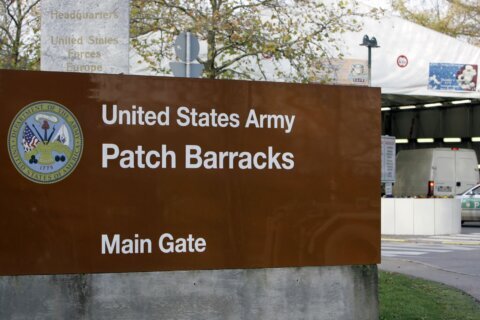WASHINGTON — Armed security personnel, high walls, long standoff distances and access controls are no longer good enough to secure facilities from terror attacks, security experts say.
Those facilities are called “hard targets” by most Western security standards. However, Mike Maness, director of TrapWire, a global threat detection firm, said: “We do not believe our adversaries share the same view.”
The Western view of what constitutes a hard target for terrorists to attack may no longer be effective, not because modern security protocols don’t work, but because modern terrorists work differently.
The fundamental difference is that terrorists no longer view physical barriers as “hard targets.”
“Guns, guards and gates don’t constitute a hard target for terrorists today,” said Maness. “Their inability to gather valuable pre-attack intelligence about the facility to launch an attack is what makes it hard.”
However, “once a terror organization decides a target is worth attacking, they will surveil and collect intelligence for as long as it takes to devise a plan that circumvents existing security systems and/or procedures,” said Maness, a former CIA officer who’s conducted covert operations against terrorists for 20 years.
Our operations teams have conducted similar surveillance operations against hundreds of critical infrastructure sites across the US, many of which were deemed “hard targets.” At nearly every site they discovered, through basic surveillance techniques, security vulnerabilities that could be exploited to launch a successful attack.
Since 2012, the direct connection between radicalized individuals in the West and hard-core terrorists in Syria and Iraq has made less-secure targets a great concern to U.S. law enforcement.
But recent intelligence gathered from the attacks in Paris, San Bernardino and Belgium have highlighted a new reality: Hard or soft —- a target is a target to today’s terrorists, especially in D.C.
“The FBI takes all threats seriously,” said Supervisory Special Agent Craig Moringiello, spokesman for the Washington Field Office of the FBI. “We cover every tip and every lead immediately, regardless of whether the suspected target is considered a soft one or a hard one. We will continue to investigate anyone who may seek to cause harm against Americans.”
“The terrorism threat is evolving,” Moringiello added. “ISIL is very effective in using social media to radicalize others and spread their message of violence. We’re very concerned about individuals who are radicalized online and are inspired to commit acts of violence here in the United States.”
The threat from terrorists, even to “hard targets,” appears to have been exponentially increased by evolving technology that alleviates the need to conduct physical surveillance.
“ISIS and al-Qaida have got fantastic capacity to get this kind of information now with the flourishing forms of communications — with smartphones and the information that’s available online,” said Robin Simcox, Margaret Thatcher Fellow at the Heritage Foundation, in D.C.
Remote surveillance is not new among professional terror groups and not just limited to them. New technology has boosted the ability of amateur jihadists to also conduct what’s called “hostile” surveillance.
In January, a plot was disrupted in the United Kingdom after police discovered four men utilizing remote reconnaissance to plot a bloody attack on the streets.
“ISIS-inspired supporters had been carrying out online reconnaissance on London police officers and London military barracks,” said Simcox, “Those are two places considered to be ‘hard targets.’”
Nyall Hamlett, 25; Nathan Cuffy, 26; Tarik Hassane, 22; and Suhaib Majeed, 21, were all sentenced to life in prison after being convicted of attempting to carry out a series of “drive-by” terrorist shootings.
British prosecutors in the process of planning the attacks, Hassane used Google Street View on his iPad to surveil the Shepherd’s Bush police station and the Parachute Regiment Territorial Army barracks at White City.
The four had been radicalized by the Islamic State of Iraq and the Levant (ISIL), primarily by extremist speeches and excerpts from ISIL propaganda found on their mobile phones, authorities said.
That specific remote surveillance capability, and the fact that top ISIL leaders can communicate directly and secretly with operatives, worry officials in the U.S.
On Thursday, the U.S. Department of Justice brought forward a case highlighting this very concern.
David Daoud Wright, 26, of Everett, Massachusetts; and Nicholas Alexander Rovinski, 25, of Warwick, Rhode Island, were charged in a superseding indictment with conspiracy to commit acts of terrorism transcending national boundaries.
They are charged with “conspiring with each other, known and unknown conspirators,” according to court documents.
Not only were the two allegedly planning to behead Americans on behalf of ISIL through their “Martyrdom Operations Cell,” but one member, who was killed by police earlier, had been “communicating with ISIL members overseas, including Junaid Hussain.”
Hussain, ISIL’s chief of social media outreach, was killed Aug. 24, 2015, in a U.S. airstrike in Raqqah, Syria.
Since the Paris attacks, “cafes, rock concerts, bars, like those attacked in Paris, are increasingly targeted because they are very hard to defend. There isn’t any security in place,” said Simcox.
TrapWire’s blog suggests a range of things that can be done to improve security at those locations:
Train your employees to spot and report suspicious activities. Encourage them to engage suspicious strangers in conversation to determine why they are at your site. If you have CCTV cameras, ensure that they can provide coverage of your surroundings, pointed out toward the perimeter where surveillants operate, rather than straight down at an entrance.








